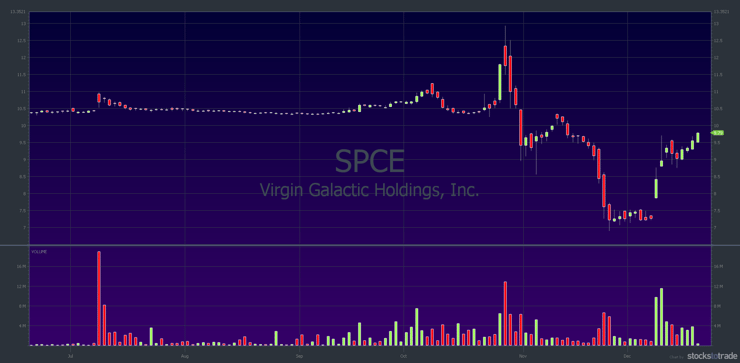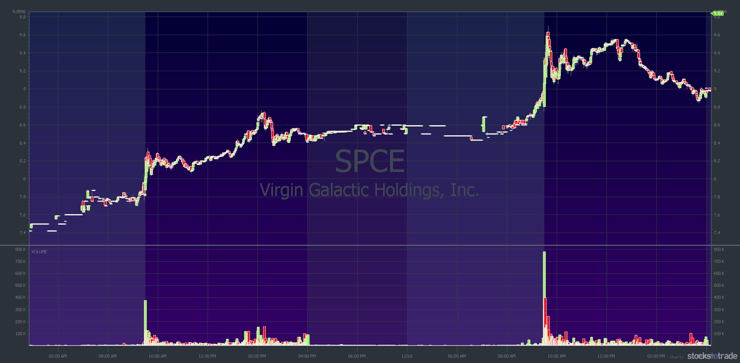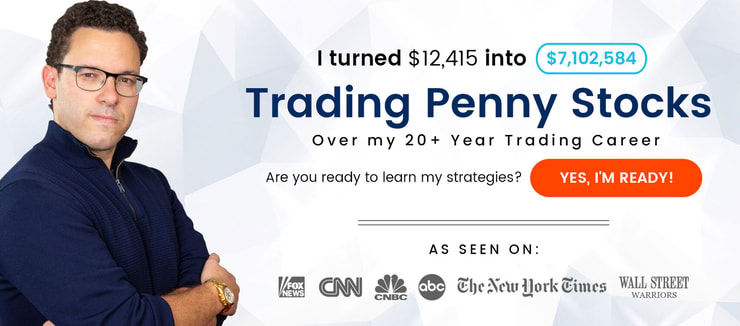The market’s been on fire with two specific trends I see happening right now.
I’ve been feeling a bit sick lately so I haven’t been trading as many of these plays as I’d like. But I’m okay with missing trades. I’ve traded while sick before, and it doesn’t end well.
You have to know when the odds are against you. You have to know when not to trade. You also have to know what’s currently working in the market.
So here are the two trends I see right now…
Table of Contents
Trend #1: Over-Aggressive Short-Sellers Creating Short Squeezes
If you follow my blog and video lessons, you know I bring this up a lot lately. I keep repeating myself for a reason. The short-squeezes can provide so much potential for longs. I want to make sure you really, really get it.
There are so many newbie short-sellers in penny stocks right now. They have no idea what they’re doing.
I know of a few newbie short-selling chat rooms that were even mocking my library of video lessons. They don’t think they need to study. They think they know everything — they don’t.
Some people just have a hard time listening to me. They’re more worried about being right than being successful. They want to learn the hard way.
I can’t force them to study. I make all these lessons, and I’ll continue to make them. But I can’t make people listen to me.
So, here’s yet another recent example of a short squeeze…
Technical Communications Corporation (NASDAQ: TCCO)
TCCO went from the $2s to the $10s in one day. The company had good news on its earnings report. Was it worth the huge price move? Probably not. The overly-aggressive short-sellers caused that.
There were newbies shorting this stock in the morning consolidation in the $5 to $6 range. When it spiked quickly, a lot of them got annihilated.
I bought this on the dip in the $5.40s after it previously spiked to the $7s first thing in the morning. I ended up cutting losses quickly since it was already up a lot. It was a bit too choppy for me. I was overly-cautious because I’m sick.
After I sold my position, I took a nap and actually missed the follow-up moves. In an ideal world, if I hadn’t been sick and in need of a nap, I probably would’ve re-bought it.
Sometimes you lose. You need to accept that. I was on the right track. I only took a small loss. I had the right mindset and the right plan — I was just too early. Some people get pissed when they lose. They think they’re entitled to make money in the markets.
Remember, the stock market doesn’t owe you anything. When I’m on the right track, that’s still a win for me. I know I can get the next one. Especially when I’m feeling 100%.
Take a look at this chart. It should help you understand the potential of short squeezes and supernovas.

Short-Sellers Have Their Timing All Wrong
Why were they shorting an earnings winner on its first green day?
Because they don’t study and prepare. They think that all the stocks have to go down. And technically, in this case, they’re probably right … eventually. The stock didn’t deserve to go to $10. But they’re the ones creating these moves by being too aggressive. They’re shorting way too early.
You just don’t short an earnings winner on its first green day. Especially a former supernova like this, and especially in the morning.
Every short-seller in TCCO in the morning was on the wrong track. Maybe they could make $1 a share if they took profits quickly … If they had sold at the top and covered in a dip.
But typically, short-sellers think the stocks will go down more. They average up and up, taking on more risk. Eventually, they’ll blow up their accounts. In TCCO, the shorts in the $5s and $6s were down by $2 to $3 a share by 11 a.m.
Trend #2: Tax-Loss Selling Is Causing the January Effect

The second trend I’ve seen lately is tax-loss selling. Tax-loss selling is when investors sell losing positions before the year-end so they can claim the loss on their taxes.
This usually happens in the last few months of the year. Stock prices get beaten down due to all the selling…
This creates the January effect. When good news comes out, the stock price spikes as short-sellers cover their positions and others buy on the positive news. The investors who sold to take the tax losses may also start buying back their positions.
These terrible charts can become the biggest spikers late in the year or in January.
And yes, I know it’s not January yet, but … This happens every year.
When you know that and you’re prepared, you can look for these opportunities early. It doesn’t just happen in January. If there’s been a big sell-off in a stock and it’s potentially undervalued, any good news can create spikes.
More Breaking News
- Is Nvidia the Top Pick for 2025? Breaking Down Recent Headlines
- Interactive Brokers Group Defies Expectations with Robust Q4 Results
- Why Is Rigetti Computing’s Stock Tumbling? Key Insights and What Lies Ahead
Virgin Galactic Holdings, Inc. (NASDAQ: SPCE)
That’s what happened with SPCE. The sell-off started in November. As you can see from the six-month chart below, there was heavy selling pressure. The price went down quickly.

News of an analyst upgrade brought buyers to the stock. The newbie short-sellers see the spikes and figure it’s up too much. In the past, it hasn’t held spikes well, so they figure it has to go down.
Some shorts made fun of me for buying this. They accused me of trying to pump it up when I bought it in the $8s.
The reality is, I bought it because of the good news and big volume. It was spiking nicely so I bought the breakout of the premarket highs. It was a bit choppy, but I took the meat of the move from $8 to $8.30.**

It was the best morning move. In the afternoon it broke above the previous high of the day and squeezed out the early shorts. The second day was actually an even better spike. It was a pure morning short squeeze.
There were lots of opportunities to get a piece of the move. I usually play it overly safe, and this trade was no different. Since I was sick, I probably shouldn’t have even traded. But I do this to teach. I want to teach you the reasons for the move and why I’m trading it.
But don’t think every stock will be a perfect January effect or short squeeze. Just be prepared. Watch video lessons and DVDs and read my blogs. When you see the patterns repeat over and over, you can prepare and trade with more confidence.
Why I Think This Is a Great Market for Going Long
Congrats to so many traders who successfully traded these two plays. There was potential for making 50 cents to $2 a share or more.
The newbie short-sellers in these stocks are too early — and making it a great market for longs. The year-end tax-loss selling can also provide great opportunities — if you’re ready for them.
You just never know how high these stocks can spike. Short selling is such an over-crowded niche right now. Any stock that’s up is getting heavily shorted. It’s creating these great squeezes.
And that’s creating great opportunities for longs. When the shorts are buying to cut their losses, that’s when the longs can take advantage and ride the momentum.
Just remember to take profits along the way. You never know where the top will be. And when the stock’s up a lot and all the shorts are squeezed, the buying will subside. Buying dips, like I did on TCCO, is a better risk/reward entry. Don’t chase the spikes.
This influx of short-sellers in the market won’t last forever. Eventually, they’ll all lose too much and be out of the market. Take advantage of these opportunities while they’re here.
Remember, I talk about this over and over to try and help you understand the reasons behind the price moves. Understanding the relationship between buyers and sellers and their mentality can help you find an edge.
How Do I Find The Stocks I Trade?
Frankly, it’s amazing that people still ask me this question. It’s simple — I always look at the biggest percent gainers for the day. I want stocks with volume and preferably a catalyst.
As I mentioned earlier, both of these stocks I played had positive news. TCCO was an earnings winner and SPCE was an analyst upgrade. That news brought in the volume, causing the prices to go up. Both moves were combined with short squeezes.
I saw SPCE on Oracle on StocksToTrade. This is an algorithm technology you should put to use. I think it’s smart to use the StocksToTrade platform. It’s specifically designed to find the low-priced stocks I like to trade.
Some of the other brokers’ scans won’t even show you low-priced stocks. You want to give yourself every advantage you can in trading. Get the software for a trial to see for yourself what it can do.
Check out this post to see even more of my favorite tools.
How Can You Prepare for These Trends?
A lot of people don’t want to listen to my rules. They don’t want to put in the time to study. Well, sorry to say, but those people probably won’t make it in trading long term.
You need to set yourself up for success.
I alerted a lot of these recent plays in my watchlist to my Trading Challenge students. I’ve written posts about short squeezes and holiday trading. I’ve posted video lessons on these trends.
I give you all these resources, but you need to take advantage of them.
If you want to be in trading long term, you need to focus on your education before you risk a single penny in the market. So if your New Year’s resolution is to pursue freedom and the life you want, do it right. Take the time to study and learn first.
Think about it … If you want to become successful in any other profession, you have to put in the time. You need to go to school or take courses, and you need to study. Doctors go to school for years. You don’t just jump in and start performing surgeries.
Why would it be any different in trading?
You need to do whatever it takes to increase your odds of success. Join my Trading Challenge. Watch my free online content. Sign up for my free weekly watchlist. Paper trade on StocksToTrade. Study my Penny Stock 101 Guide.
Do whatever it takes.
[**Note that these results aren’t typical. It takes time and dedication and to build exceptional skills and knowledge. Most traders lose money. Always remember trading is risky … Always do your due diligence and never risk more than you can afford.]
What do you think? Let me know in the comments … I love to hear from you!





Leave a reply